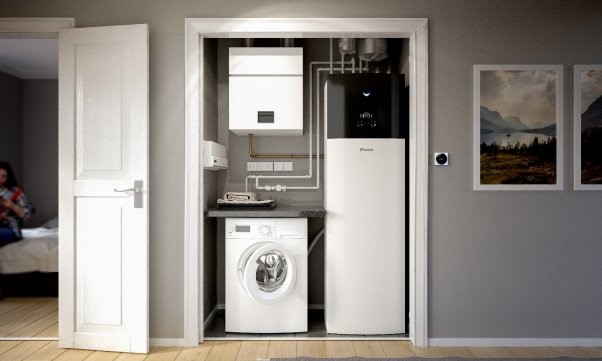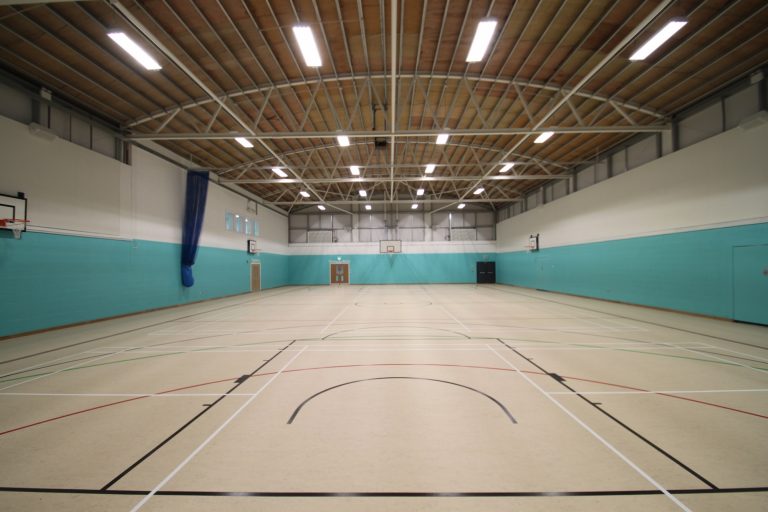“Ambitious investments in production capacity and R&D will allow Daikin Europe to expand market and product leadership,” says Patrick Crombez of Daikin Europe. Market leader Daikin Europe sees an inflection point in the European hydronic heat pump market, with growth rates anticipated to increase from 10% CAGR to 20% CAGR. This will lead to annual heat pump installations of 4 million heat pumps by 2030, up from 1 million in 2021. Daikin Europe is responding by investing in production and innovation capacity, warehousing and logistics and increased training for installers and service technicians across the EMEA region. Patrick Crombez, General Manager Heating and Renewables at Daikin comments, “Switching our heating systems to heat pumps represents a historical transformation to low-carbon heating, with benefits for climate change but also healthier living environments. We are proud to lead this transformation in Europe.” Daikin Europe’s business unit ‘Heating & Renewables’ is growing fast and – as the European market leader in this category – is outperforming the European heat pump category growth. “For us 2021 has been a turning point for heat pumps”, says Patrick Crombez. “Consumers and policy makers have never been more eager to decarbonize heating systems.“ Over the past decade, the European market for heat pumps has grown at a strong pace, with an annual growth rate of 10% (CAGR) from 2011 to 2020, resulting in the expected installation of 1 million heat pumps in 2021. In the coming years, Daikin – in line with other industry experts – anticipates a sharp acceleration in heat pump adoption. By 2030, it expects 4 million heat pumps will be installed each year, representing an annual growth rate (CAGR) of 20%. At that point, 1 out of 3 heating systems installed will be a heat pump, up from 1 out of 10 in 2020. While this represents steep growth compared to recent years, Daikin Europe considers this the minimum to ensure a move to a decarbonized residential heating market in Europe. Patrick Crombez: ”From all available data, it is clear that heat pump adoption is hitting an inflection point this year and the already robust growth of the category will only accelerate.” A key driver for heat pump growth has been the introduction of legislation governing new builds in many European countries, ranging from general regulations in France such as RT2012 (which sets a new minimum standard for thermal insulation of dwellings), to a ban on combustion boilers in the Netherlands. Additionally, incentives in France, Germany and Italy have successfully increased the appeal of heat pumps in the replacement- and renovation market. At the same time, heat pump technology has evolved to make heat pumps an attractive option: the arrival of ‘high temperature’ heat pumps means existing fossil fuel boilers can be replaced without the need to update or modify existing radiators. Daikin Europe invests in production capacity, innovation In the coming years market leader Daikin intends to more than triple its European heating production and expects their heating business to become one of the key pillars of Daikin’s revenue by 2025. Today, 5 of 14 Daikin’s EMEA factories are dedicated to heat pump production. All Daikin heat pumps sold in Europe are developed and produced in Europe, with main Daikin factories in Germany, Belgium and the Czech Republic. A recently announced investment plan for the next 5 years includes a sizable investment in the heat pump category. Patrick Crombez, Daikin Europe notes, ”Without offering a detailed breakdown of our investments, a substantial part of Daikin EMEA’s planned 840 million EUR investment over the next 5 years will be allocated to heat pumps. This will allow us to expand our European market leadership in heat pumps.” Part of the investment aims to expand production capacity to keep up with demand. Another area of investment is the planned construction of a cutting-edge development complex ‘European Development Center (EDC)’ in Ghent, Belgium, allowing Daikin to strengthen its leadership in innovation and to allow a faster and wider development of heat pumps. The EDC complex represents an investment of €140M, will offer 380 jobs locally and will also function as the Daikin global centre for heating product development. Daikin Europe expands European warehousing, training and deliveries to support transition to decarbonized heating In 2021, production of Daikin Europe heat pumps will amount to 1.5 million units (covering residential, commercial and industrial hydronic heat pumps produced within the EU). It currently handles some 71,000 deliveries per day from its 30 warehouses all over Europe, and it is ready to scale this to meet demand. Patrick Crombez comments, “In the next few years, we will increase our number of warehouses to allow us to reduce delivery distance to our customers. Our integrated stock and warehouse management approach allows us to move stock faster, offer better service and lower logistics costs.” Finally, Daikin Europe offers support and training to installers in 54 training centers across Europe. Training ranges from starter courses on installation of heat pumps and direct expansion technology, to advanced troubleshooting courses and service controls on new products. Patrick Crombez says, “Despite the difficult conditions due to COVID-19, we are proud to report that the number of trainees – both online and in real life – doubled in 2020. Our investments strengthen our existing production and distribution network and allow us to look forward to the next decade with confidence and excitement.” Supporting “a historical transition” The investments and growth plans of Daikin Europe Heating and Renewables fit into its vision of decarbonizing residential heating throughout Europe. As fossil fuel-based residential heating is a major contributor to greenhouse gas emissions, this transformation will allow Europe to achieve its ambitious emissions reduction targets for 2030. Patrick Crombez states, “The coming years will be pivotal in decarbonizing the heating of residential and commercial buildings. It’s a truly historical transition that will contribute to a stable climate, safer and healthier homes, and more affordable energy bills. We are proud and we could not be more excited to take the








